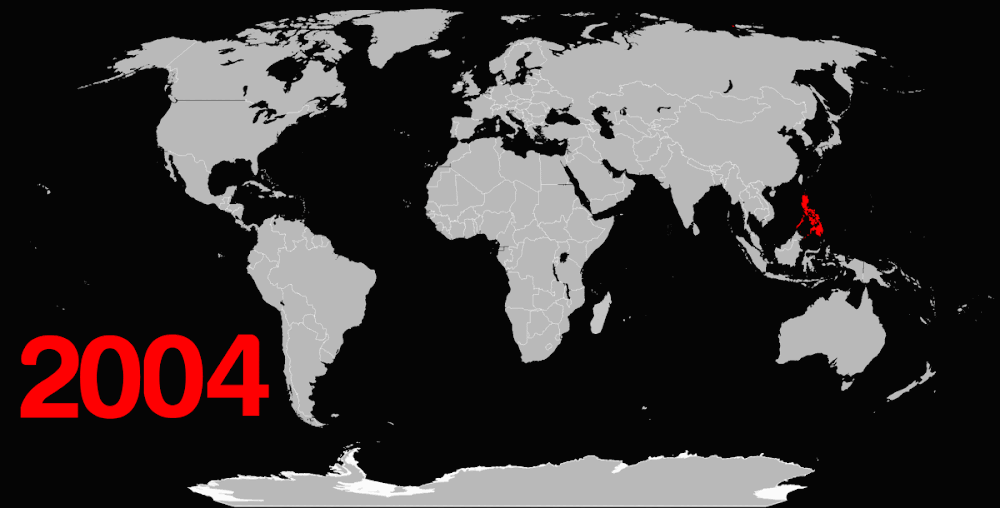♣♣♣♣/♣♣♣♣♣
In the land of Kumandra people lived in harmony with dragons until the Druun arrived, a dark plague that left everyone calcified as stone in its wake. The last dragons make a sacrifice and conjure a dragon stone to vanquish the Druun for good. As everyone is brought back to life, the tribes begin to quarrel over the magical orb, eventually leading to it breaking into five pieces centuries later. Each of the five tribes steals a piece: Talon survives by building their stilt houses on water, the Druun’s weakness; Tail, with no water defenses, is now a desert wasteland; Spine is left with one living inhabitant, a warrior giant named Tong (Benedict Wong); Fang flourishes thanks to its strategic location surrounded by natural water canals, led by chief Virana (Sandra Oh) and her daughter Namaari (Gemma Chan); Heart, the original protector of the remnant, is now in ruins, its heiress Raya (Kelly Marie Tran) intent on recovering all the pieces to bring her father Chief Benja (Daniel Dae Kim) back to life. Living under constant threat from the Druun, they must work together to summon Sisudatu (Awkwafina), the last dragon and their last hope.
This film is a composite of Southeast Asia. The landscape, costumes, and traditions are all representative of the region. Nevertheless, you just cannot point out which. Is it Vietnam? Cambodia? Indonesia? The outfit of Raya’s people look Thai-inspired, but the Muslim influences in the architecture of their palace make you think of either Malaysia or Brunei, while her sword seems like a modified version of a Kris blade popular in the Philippines. It appears that in trying not to offend any culture in particular, Disney played it ultra-safe by putting all of them in one giant pot. The product? A cultural southeast Asian chop suey.
It is a wise decision, though. Remember that controversy regarding Naomi Scott’s casting as Princess Jasmine, her being of Indian descent instead of Muslim? The perfect excuse is that the setting was a fictional region anyway, in this case a hodgepodge of the Middle East. It looks like Disney has come to master the art of being culturally vague with their recent projects. In a super sensitive world where cultural appropriation can be hurled at you anytime and anywhere by anyone, this is perhaps the best route to take. But let’s go back to Raya and the Last Dragon. Is it worth the $29.99 premier access price on Disney+?
For the sake of representation, I would say that it is. It is an enjoyable film that showcases the culture of an oft-snubbed Asian region, at least in the Hollywood arena. Given Disney’s globally dominant position as a cinematic hegemon, they are doing the world a favor by making their products more representative. After all, not all Disney princesses have to be white, right? Opinion coming from a Filipino: I think most of us still relate more to Moana than Raya, perhaps because we somehow feel a closer affinity to the Pacific Islander tradition. Raya and the Last Dragon feels more like continental Southeast Asia to me.
Strange is that despite Hollywood’s representation gimmick, most of the actors in this movie are of East Asian descent. Awkwafina. Gemma Chan. Daniel Dae Kim. Sandra Oh. Benedict Wong. In fact, only Kelly Marie Tran and Ross Butler have legit southeast Asian roots here, not to mention that most of these actors already got their respective breaks in the film industry. Are they the only Asian actors working in Hollywood right now? Considering that this is animation, and they are only providing voice-overs, would it have been that difficult to be more “representative” of the culture you are milking, or does this whole representation thing simply mean more work for Asian actors who are already established? Kinda superficial, like, let's give the southeast Asian roles to East Asian actors. They all look the same to us anyway. LOL.




_poster.jpg)



0 creature(s) gave a damn:
Post a Comment